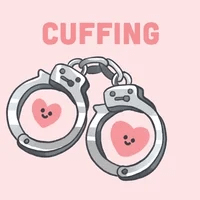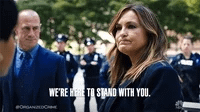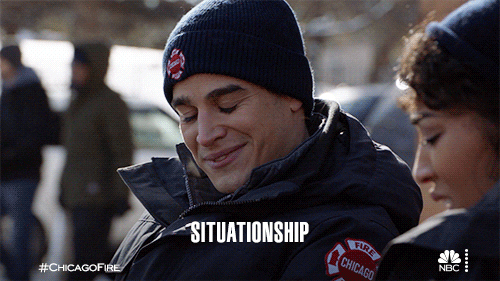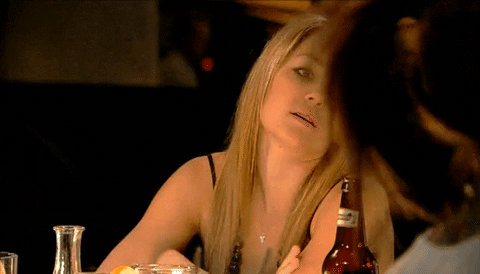Non-State Actress #12: Tell Me Again That We'll Be Partners and Friends
It's Cuffing Season and I am HYPED.
Review: Non-State Actress #11: Sending F-16s to Ukraine Is Like Being in Your Boyfriend’s Sister’s Wedding talks about the different ways we as people and We as in the United States demonstrate commitment in relationships. It’s pretty funny, honestly.
BLUF
Relationships are complicated, whether between people or countries. Just like people have best friends, ‘regular’ friends, and work friends, countries have allies, friends, and partners. Cuffing Season is upon us and relationship statuses are changing faster than you can spot a PSL in the wild - between people and countries. If you’re looking for the drama of Scandoval with the global implications of the assassination of Franz Ferdinand, then the intricacies of bilateral relationships are for you. And this month’s hottest relationship? The US and Vietnam.
Press Play
DTR
For those less familiar, urban legend states that at the end of summer and in the early days of fall a collective hunger for soup and stretchy pants results in a mass, near whole-of-society, urge to settle down. Sometimes referred to as Unconscious Coupling1 out of spite for a certain ski-crash victim and astonishment for the number of people who simple grab hold of the closest semi-human being and call it a day, Cuffing Season is sort of a trial period before being forced to DTR - or Define the Relationship - during a flurry of holiday events and celebrations. What results can be a total restructuring of social circles, communities, even local brunch-based economies.
I find most ‘reality’ television shows and collective relationship watching too cringe, but fortunately for me the Department of Defense puts out a press release each and every time the United States meets with another country, and even MORE press releases when they DTR. And when I tell you you could narrate these activities in a way that makes Vanderpump Rules look like a poorly made mid-2000s History Channel “ghost hunters” show, I am not kidding. Before we dig into the latest updates on the US-Vietnam relationship and what it means for this season - I mean this planet - let’s do a quick round up on terms.
Generally speaking, the US has three different ways of defining the relationship with another country. While the words may seem interchangeable and the nuance of the definitions can be hard to miss, it’s honestly a level of intricacy that even Taylor Swift cannot hit. Our friends over at
did a fabulous rundown on some of this earlier this year.Alliances and Allies -
Allies refers to two or more countries in an alliance, which is a formal agreement called a treaty with specific terms, promises, and commitments. Treaties can cover as much or as little ground as the parties agree to. There are economic treaties on things like trade rules (and if you’re stressed out by the rising cost of basically everything, you care about treaties!), there are treaties that set and recognize international boundaries. A defense alliance, like NATO, often means the involved countries will support - or even defend - one another during a war.
Allies are basically your work friends - you met under quite specific circumstances, it isn’t clear that you would be friends if you didn’t work together, but while you’re here you can share in your hate of Brandon from Sales who keeps talking over you in meetings. You’ll go to happy hour together but unless they’ve crossed into a very special place (we’ll come to this in a second) you probably aren’t eating a jumbo slice together and scream-singing Spice Girls in an Uber together.
Partnerships and Partners
Partnerships are less formal than alliances - there’s not treaty and its often used as a way to build relationships between nations. This is like a colleague particularly of the supervisor variety. They aren’t a work friend, but maybe they could be! Whether they’re brand new to the office and you’re just getting to know one another or you have some *~drama~* in the past you’re considering working through, these relationships are often taking it day by day or super situational. A partner is like the girl you went to college with who works at some company and shows up as a mutual connection on LinkedIn so you reach out and ask for a referral code before you submit your application.
Friends
Friends are special. Unlike allies and partners, there isn’t a distinct legal or formal definition for when a nation is a friend rather than ally. In fact, all friends are allies - but not all allies are friends. And even among friends there are different levels! Friends are people (or countries) you’d probably invite to your wedding. Within that group, there are the friends in your wedding party. Maybe you have a cool name for yourselves, like Pink Ladies or Five Eyes, which is what the US calls a group of its 4 closest, truest, most ride-or-die allies: Australia, Canada, New Zealand, United Kingdom.
Good Morning, Vietnam
Earlier this month, President Biden visited Vietnam and following a meeting with General Secretary of the Communist Party of Vietnam Central Committee Nguyen Phu Tron (the Leader of Vietnam), the two countries boldy DTR’d by going from a Comprehensive Partnership to a Comprehensive Strategic Partnership.
Basically, the US and Vietnam were talking and now are in a solid situationship.
In 2013, President Obama and President Truong Tan Sang DTR’d, going from two countries with diplomatic relations (saying hello at other people’s parties) to Partners ( acknowledging one another in the group chat, liking each other’s social media posts, some limited one-on-one communication via responding to one another’s Stories and stuff). While the agreements have some serious overlap, the difference is in the seriousness - just like the difference between ‘talking’ to someone and a situationship.
I’ve linked to the two announcements above and also in the Gimme More section. I thought about doing a summary of the specific differences here, but I think it’s more important to get back to the bigger picture and why this is the ultimate example of Cuffing Season with Scandoval-level drama. I’m also fiddling around more with video content, and plan to do a quick video explainer on more of the specifics for Paid Subscribers next week.
Ok, so back to the situationship in question.
For those less familiar, a situationship is defined by the inherently correct Urban Dictionary as “that space between a committed relationship and something that is more than a friendship.” This definition is confirmed by my twin gdsisters who are both hip and cool 20-somethings and the consistently ‘with it’ Kate Bell. Thank you all for your service.
One of the hallmarks of a true situationship is the potential for drama and jealousy. While not always the case, the ambiguity - no matter how intentionally or attemptedly strategic - can cause friction if one person (or country) is interacting with another person (or country) in a way that makes the other member of the situationship uncomfortable for whatever reason. The behavior can be intentional, perhaps to cause drama or force action, or unintentional. Regardless, the outcome can play out in ways not even Laguna Beach can script.
And that is exactly what is happening in the US-Vietnam relationship. The best part? The US and Vietnam know it, planned for it, and are in part DTR-ing because it creates that drama.
Girl, it is juicy.
But Where’s the Drama?
Current day Vietnam has strong, established, comprehensive relationships with China and Russia and has for a while. It’s not that surprising since all three are single-party, Communist ruled, countries with variously developed socialist market-economies, but it’s also a little surprising given the history of the relationships2. By officially DTR-ing its relationship with the US at a time of a TON of friction and various types of conflict and disagreement between the US and both Russia and China, Vietnam is knowingly stirring the pot.
And by *going to Vietnam,* President Biden is basically saying he’s here for it.
Today, China is Vietnam’s top trade partner. In 2022, China's accounted for 15.5% of the total exports values of Vietnam and 32.9% of imports of Vietnam in 2022.
But that too is a situationship.
At the same time, China is claiming territorial ownership over more and more of the islands near Vietnam so Vietnam is increasing its security cooperation with the world’s largest democracy - India.
Similarly, Vietnam has a history of defense and security cooperation with the Soviet Union. While the relationship shallowed after the Soviet Union’s dissolution in 1991, Vietnam does allow Russia to use a pre-existing naval base as a supply station. Plus, in addition to having a ton of Soviet-era legacy weapons and equipment, Vietnam recently committed to buying MORE weapons from Russia.
And by recently, I mean literally days before Biden arrived.
So Is Vietnam in a Love Triangle/Paralellogram ?
Vietnam is making a strategic choice to have its cake and eat it too. An economic relationship with China while challenging China’s attempted absolute military power in the region by cooperating with India, buying weapons from and supporting logistics for Russia, and dramatically, publicly, ceremoniously, DTR-ing its US ties.
You could call this polyamory, I guess, but it isn’t entirely consensual. It’s more like this:
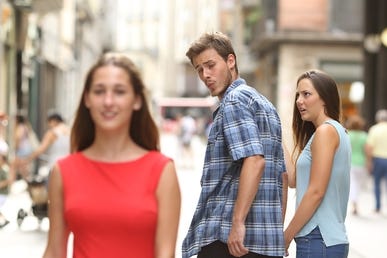
The United States, like Vietnam, made a bold strategic choice to show up when and how it did. And it was an intentional one! Given the history between the US and Vietnam, current realities between the US, China, Russia, and the US’ recent DTR-ing of its relationship with India, do NOT get it twisted. Biden’s trip to Vietnam is the United States looking its history in its face and trying to move forward. Whether its out of morality or the desire to make it clear China and Russia will not go ‘unchecked,’ up to you.
Wrap It Up
A lot of what we’ve covered so far in Non-State Actress has centered around relatively straightforward situations. It’s been about defining what a values-forward world view means, defining and understanding how those values and power is demonstrated in the world, weighing policy decisions, and understanding decision makers. Basically been pretty ‘A + B = C.’
We’re definitely not done with that path, but this post is the first time we’ve focused almost entirely on how things work and why it matters when there’s more than two parties involved. Which is, you know, mostly how the world works.
I wrote this post to answer the question ‘Why did President Biden go to Vietnam and does it matter,’ so let me answer it point blank:
President Biden went to Vietnam because its geographic location, current relationships with China and Russia, and the behavior of China and Russia in various parts of the world makes it important for the US to have a stronger relationship with Vietnam.
The trip matters because of history of the US-Vietnam relationship, the ongoing tension between China and most democracies, Russia’s invasion of Ukraine, and Vladimir Putin’s recent trip to North Korea don’t go away by ignoring them.
Decisions are made by those who show up, so the US is showing up.
Gimme More
Allies vs Partnerships - Instick Media
Allies vs Partnerships - Department of Defense
US - Vietnam Policy Dialogue - Department of Defense
The Role of Allies and Partners in US Military Strategy - Dr. Christine Wormuth, now Secretary of the Army, RAND
Joint Statement on the Comprehensive Partnership Between the US and Vietnam, 2013 - The White House
Joint Leaders Statement on the Comprehensive Strategic Partnership Between the US and Vietnam, 2023 - The White House
Vietnam’s Ties to Russia Tested by China’s Move in the South China Sea - Voice of America
Ok. I call it that in my own mind because it makes me laugh.
Both the Soviet Union and Communist China were major supporters of the North Vietnamese and were crucial to North Vietnam defeating the French colonial ‘relationship,’ and the capitalist South Vietnam - supported by the United States in the 1960s.
Things got messier in 1979 with China and Vietnam on opposite sides of the Cambodian-Vietnamese War - the 1970 conflict between South Vietnam and Cambodia. Around the same time, Vietnam build a close relationship with the Soviet Union and China was not thrilled by this perceived threat to China’s regional power and influence. Vietnam was similarly annoyed with China for starting to have a relationship with the United States via the Nixon-Mao Summit in 1972.
Things with China really went south in 1979 when China’s People’s Liberation Army invaded Vietnam for 2 months related to Vietnam’s presence in Cambodia. There was sporadic fighting between Vietnam and China throughout the 1980s, and generally things were really not good. Sort of Janis Ian / Regina George vibes.
In 1991, the Soviet Union dissolved and Vietnam and China started to talk again. Over the last 30+ years, Vietnam and China have rebuilt their relationship - especially in economic terms. The two countries supported each other in joining the World Trade Organization.





